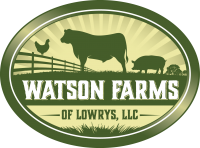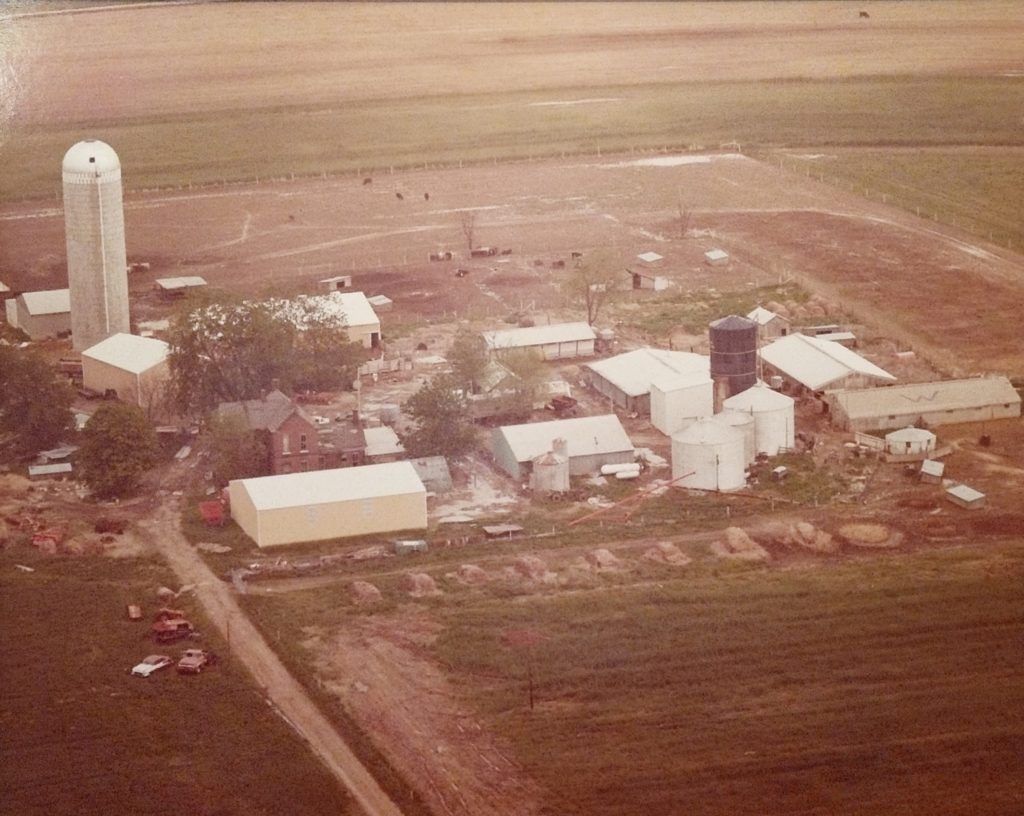A lot of what we do as farmers is try to adjust to an ever-changing context in order to stay relevant to customers while still being profitable. In other words, what got us here won’t get us there. This is definitely true for us here at Watson Farms, and we would like to bring you along with us through this multi-part blog series to show you how we have adapted in the past and how we intend to adapt going forward. We have made some big changes lately to our operation, and we want to show you how we got here, and how you can join us in our mission to be better farmers.
Let’s start back in the 1950’s when my grandparents, Jim and Anna Watson, living in southern Indiana, were expanding both their farm and their family. By the mid-1950’s they had 4 children, and like farm families today have to do, they also had to get creative to make ends meet. Jim got a good-paying job at a power plant across the state, which in turn provided an opportunity to purchase a farm nearby in order to be closer to the plant. This second job helped the family expand the farming operation which was centered around corn production, but also involved cattle and hogs.
Their methods were viewed as cutting edge back then, and they were untested as to the long term impacts on the environment. But nonetheless, this was the way that vast numbers of farmers across the country were heading: using herbicides and pesticides, chemical fertilizers, feeding grain to cattle, raising pigs in confinement, etc.
As the children got older, they too became a part of the farming operation and the family moved back to Freelandville, Indiana where they were from originally. They continued to expand the farm with a major enterprise being a farrow-to-finish hog operation that became a means of marketing cheap grain into a more valuable commodity. The family also purchased a meat shop in the small town and supplied beef to surrounding communities with their own cattle. This enterprise was not only successful in its own right, but also served as an excellent learning experience for my dad, Gary as he and I would decades later begin direct-marketing beef once again.
So there is a quick snapshot of several decades of the beginnings of Watson Farms. Next, we’ll look at yet another incredible transition for the family in order to keep farming even though it meant moving 600 miles away, and then enduring multiple crises in the 1980s and 1990s.
Until then, take a look at an aerial shot of the Freelandville farm in the 1970s complete with a 1000-hog per year farrow to finish operation and cattle feedlot. By the way, some of the equipment in the photo is still with us today although with a little more rust.





Your family’s farming history is interesting. I’m looking forward to future installments.,Thank you for sharing.
Thank y’all so much for what y’all do!!!
So interesting! I’m looking forward to the upcoming weeks to learn more!
Thank you so much for all y’all do for us. Thanks for sharing your family history with us. We know the work is hard and are thankful for what yall do.
Thank you for sharing your family’s story with us. I love the photos. They tell a story themselves. We are grateful for your hard work and it shows in your products. God bless your family for feeding ours!
[…] my grandfather purchased in 1979 when he moved from southern Indiana to South Carolina. Here’s a blog post with more information about the move from Indiana to […]